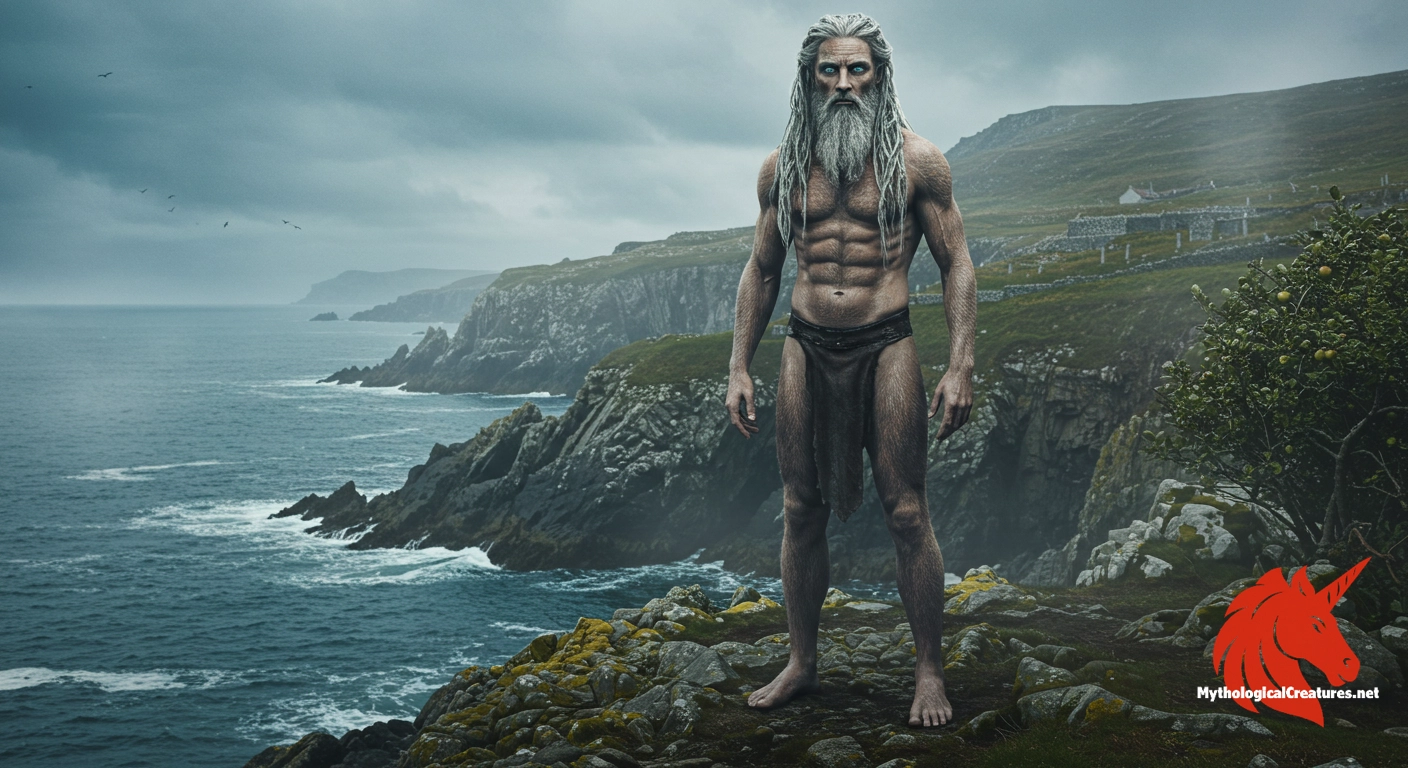Manannán mac Lir: Manannán mac Lir is a revered sea god and king of the Otherworld in Gaelic mythology.

Manannán mac Lir
Manannán mac Lir - As a central figure in Celtic mythology, Manannán mac Lir epitomises the mysterious allure of the Otherworld and the boundless nature of the sea, serving both as protector and guide to his people.
Origins & First Encounters
Manannán mac Lir emerges as a riveting figure in the ancient lore of the Gaelic world, embodying the spirit of the sea alongside a regal mastery over the otherworldly realms. Born from myths woven into the fabric of Irish, Manx, and Scottish tradition, his title as 'son of the Sea' immediately hints at his elemental power and timeless mystique. He is celebrated not only as a formidable warrior but also as a gentle guardian whose presence bridges the mortal world and an ethereal domain. His rule over enchanted isles—known by evocative names such as the Isle of Apple Trees, the Plain of Delights, and the Land of Promise—underscores an enduring connection to nature and magic. The lore surrounding him is rich with imagery of a god who cloaks his sacred abodes in a veil of mist, ensuring that his realm remains hidden from unworthy eyes. His legendary use of the fabled mist of invisibility speaks to a mastery over both natural elements and supernatural forces. As humanity began to dominate the physical world, his stories evolved to highlight his role as the custodian of those timeless, unchanging mysteries. The enduring nature of his myth serves to remind us of a period when the boundaries between the tangible and the mystical were fluid and ever shifting. Through centuries of evolving tradition, Manannán mac Lir continues to captivate through his unique blend of martial vigour and unearthly grace.
Source Texts & Tale Variants
The narrative threads of Manannán mac Lir are gathered from a rich tapestry of medieval manuscripts and enduring oral traditions. Ancient texts, preserved in compilations of Gaelic lore, recount his deeds with lyrical prowess and highlight his role as both protector and sovereign of otherworldly realms. Variants of his myth are dispersed across disparate sources, each reflecting the cultural nuances of Ireland, Scotland, and the Isle of Man. Some accounts portray him as a benevolent guardian who bestows hidden knowledge upon mortal heroes, while others cast him in the role of a mysterious trickster, shifting the winds of fate at his whim. Diverse tales detail his supernatural artefacts—ranging from his enchanted boat to his legendary sword—each portrayed with its own mixture of wonder and caution. Folkloric records hint at secret passages to mystical realms that only he can unveil, fuelling an enduring sense of mystery around his character. The stories preserved in ancient annals and bardic poetry often vary in tone, reflecting the challenges of preserving oral tradition across generations. As different cultures recorded his exploits, the core essence of his identity remained intact, even as the surrounding details morphed to suit local tastes and spiritual needs. This manifold narrative legacy continues to evoke curiosity, underscoring not only the depth of his myth but also the transformative power of folklore.
Form & Powers
Artistic depictions of Manannán mac Lir evoke an image as fluid and dynamic as the ocean itself. His visage is often recounted with features that echo the cool mystery of the deep, with eyes that shimmer in shades of blue and grey reminiscent of both still lochs and tempestuous seas. Flourishing locks—described in some accounts as silver or tinged with hints of sea-green—cascade about his shoulders, merging with the ethereal vapours that are his hallmark. His physique is portrayed as robust yet graceful, reflecting both the raw power of crashing waves and the serene strength of a tranquil tide. Richly adorned regalia, sometimes embroidered with maritime motifs and arcane symbols, drapes his form in colours that shift like the interplay of light on water. The imagery of his attire often includes an otherworldly cloak, said to be woven from the very mists and foaming crests of the sea. Iconography also portrays him alongside his mystical accoutrements—the sleek, self-navigating boat and the mighty steed that strides effortlessly across both land and water. In many visual traditions, he is depicted wielding the enchanted sword Fragarach, a potent emblem of his divine authority and supernatural might. Variations in these depictions underscore a dual nature: as both an ageless warrior and a serene custodian of the natural, ever-changing world.
Regional Faces
The myth of Manannán mac Lir displays a vibrant spectrum of characteristics that shift subtly from one region to another. In Irish lore, he is often revered as the paramount sea deity, whose commanding presence carries deep associations with ancient fertility rites and the elemental forces of nature. Scottish traditions tend to present him with a slightly more intimate air, blending stern majesty with an undercurrent of mischievous charm. On the Isle of Man, local renditions refer to him as Manannan beg mac y Leir, a term that reflects both affection and distinct regional inflection. Each variant absorbs the unique cultural and environmental influences of its homeland—from rugged highland landscapes to the mystical allure of island seascapes. The tales in these regions stress aspects of his personality that resonate with local concerns, whether highlighting his role as a protector of secret isles or as a keeper of ancient wisdom. His enchanted boat and incorruptible steed, for instance, are sometimes tailored in description to mirror local maritime traditions. Such nuances enrich the broader narrative of Manannán, ensuring that while his core persona remains consistent, his myth is continually refreshed by regional storytelling practices. Taken together, these local adaptations reveal a deity who is as diverse and multifaceted as the Celtic lands themselves.
Cultural Parallels
Across the spectrum of world mythology, Manannán mac Lir occupies a niche that invites comparison with several powerful sea deities. Like the Greek Poseidon and the Roman Neptune, his dominion over the ocean connects him intrinsically with the raw, untamed forces of water. However, his mythology integrates both martial strength and spiritual guardianship, setting him apart from counterparts who are primarily associated with physical phenomena such as storms and earthquakes. His command of mystical artefacts and hidden realms places him in a unique category that blurs the boundaries between a god of the sea and a keeper of the mystic threshold. In Welsh tradition, his cognate Manawydan fab Llŷr reflects a similar synthesis of sea-bound energy and otherworldly wisdom. Furthermore, comparisons can be drawn with Norse figures like Ægir, though Manannán's portrayal is imbued with an additional layer of ritual and symbolic secrecy. The recurrent motif of a shrouded presence guarding passageways to an unseen world echoes across several cultures, bridging European seafaring legends with tales of enchantment. His myth, therefore, not only resonates with the elemental aspects of nature found in many traditions but also aligns with global narratives of liminality and transformation. Through these comparative lenses, Manannán mac Lir continues to exemplify the eternal dialogue between the natural world's awe-inspiring force and the ineffable mysteries of the beyond.
Legacy & Modern Evolution
Over the centuries, the legacy of Manannán mac Lir has evolved in tandem with shifting cultural landscapes and an enduring fascination with the mystical. Early medieval narratives celebrated him as a potent guardian of the otherworld, a role that has been continuously reinterpreted through successive generations. As artistic and literary movements rediscovered the rich tapestries of Celtic myth, his image took on new layers of symbolic meaning, merging ancient martial vigour with themes of environmental and spiritual preservation. Modern adaptations have recast him in contexts as diverse as fantasy literature, film, and digital storytelling, where his ethereal qualities and enigmatic power continue to captivate audiences. Contemporary retellings often imbue him with a renewed environmental consciousness, portraying him as a custodian of nature and a reminder of humanity’s fragile connection to the natural world. Neo-pagan movements and cultural revivals in Celtic regions have embraced his mythological heritage, celebrating his role as both a protector and a guide to hidden realms. His enchanted artefacts, notably the self-steering boat and otherworldly sword, have become enduring symbols of the interplay between magic and nature. The evolution of his myth is a testament to the adaptability of folklore, able to mirror the concerns and dreams of each era while remaining rooted in ancient tradition. In every modern iteration, whether as a character in a novel or a figure in ritual practice, Manannán mac Lir continues to inspire awe and reverence, embodying the timeless allure of the sea and the mysteries that lie beyond.
Interesting Fact
An intriguing aspect of his legend is that the Isle of Man is commonly thought to be named after him, highlighting the profound impact his myth has had on both cultural identity and geographical nomenclature.
Quick Creature Info
Associations:
Our Mythic Legendary Rating:

Also Sometimes Known As:
Habitat:
Supernatural Powers:
Physical Attributes:
Abilities:
Behavior:
Lore:
Related Creatures, Tales or Lore
- MManawydan fab Llŷr
- DDylan ail Don
- NNjordr
References
Discover Another Mythical Legend You May Not Have Heard Of?
Uncover the mysteries of ancient folklore and expand your knowledge of legendary beings from cultures around the world.
Dare to Meet the Imoinu....
Curated by the Mythological Creatures Team (rev. May 2025)
